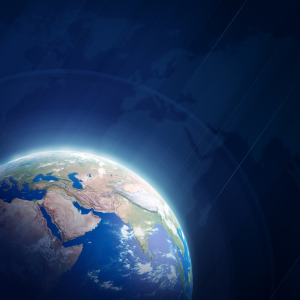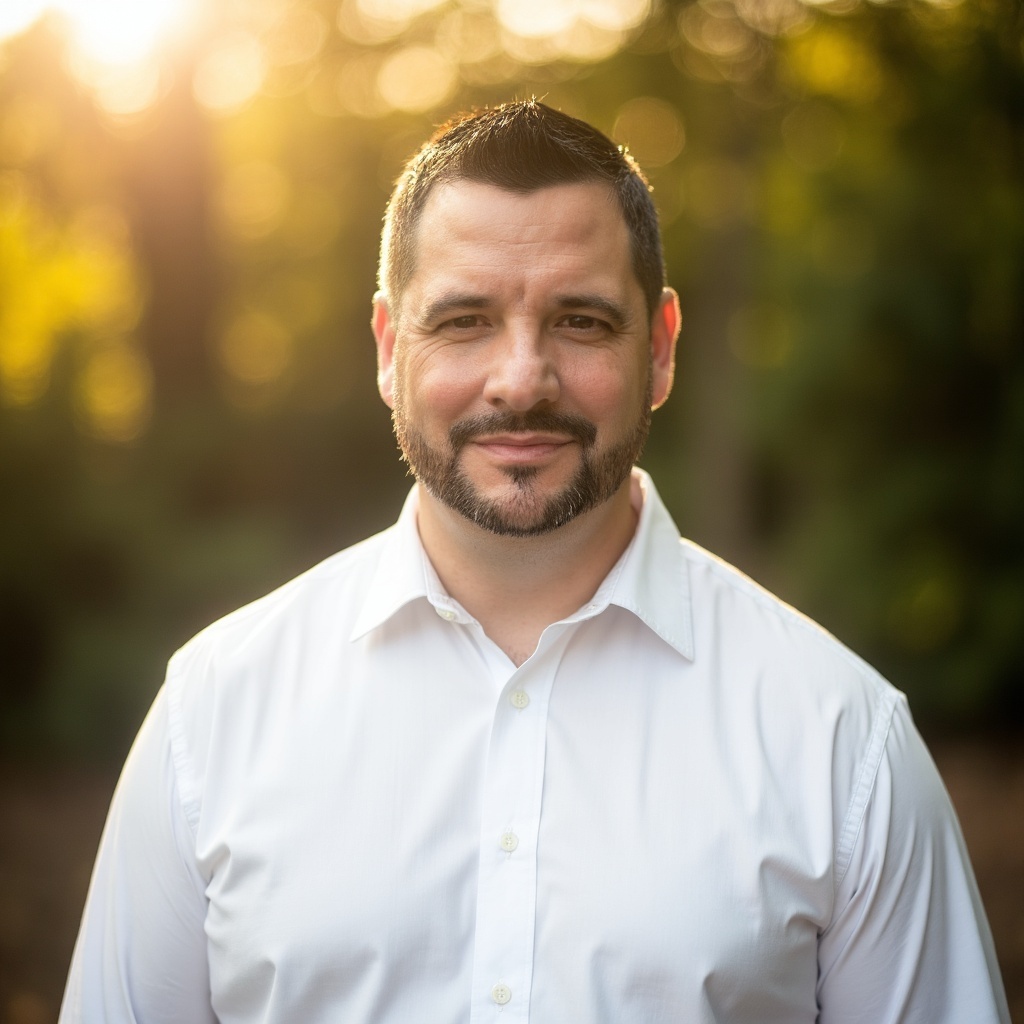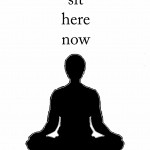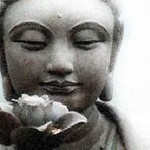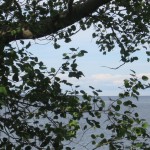Friday
A World Built on Pain: The Call for Healing and Change
By George Cassidy Payne
We live in a world where systems of power and dominance are designed to destroy the very planet that sustains us. These systems, though old in origin, have become more visible than ever before. They are built on extraction, exploitation, and a blind pursuit of progress that disregards the balance of life on Earth. Mother Earth is suffering under the weight of human-made unsustainable practices.
As Thich Nhat Hanh, a renowned teacher of peace and mindfulness, has often said, our connection to the Earth is not some abstract concept but something profound and immediate. To love the Earth is to love ourselves because we are intricately woven into the fabric of life. Yet, despite this deep connection, the structures of our society continue to foster destruction. Economic systems prioritize growth, accumulation, and exploitation, often at the cost of the environment and all of its creatures. The question we must ask is: where does this path lead us? Will our desire for control and comfort continue to erode the very systems upon which we depend?
Civilization, as we know it, is unsustainable. The rise of agriculture over 10,000 years ago marked the beginning of a trajectory where humanity’s relationship with nature became one of domination. We have seen entire species wiped out and ecosystems decimated. Today, 90% of fish populations are depleted, and 80% of old-growth forests have been destroyed. This is the legacy of human progress. We’ve created systems that exploit nature, driven by a desire to conquer and control. But at what cost?
The violence inflicted upon the Earth is not just physical; it’s linguistic and ideological. The discourse surrounding nature and sustainability has been shaped by political and economic forces that treat the natural world as something to be harvested, not a living community to be nurtured. We are not separate from nature; we are part of it. Yet, in our arrogance, we act as though we are above it, consuming without consequence. The truth is clear: without nature, we cease to exist. The buffalo skulls scattered across the Plains are a haunting reminder of what happens when we push too far, too fast, and too greedily.
Our ego has placed itself in direct opposition to the ecological system that sustains all life. The needs of nature must come before the needs of economic systems, but we continue to prioritize growth over balance, and consumption over care. This is a profound injustice — not only to the Earth but to all the creatures that depend on her.
We are dealing with pathological systems — economic, political, and social structures that are broken and destructive by design. These systems perpetuate ecological collapse, social inequality, and environmental degradation. The damage they cause is not an accident; it is the logical outcome of the values that drive them. These are not systems that can be tweaked or reformed; they need to be re-envisioned.
To create a world that is just and sustainable, we must re-imagine power, ecology, and healing. This requires a radical shift — a transformation in how we relate to one another, the Earth, and ourselves.
Reenvisioning Power
Power, as we know it, is often associated with domination, control, and exploitation. We see this in the way political, economic, and social structures perpetuate inequality and environmental harm. These hierarchies place certain groups — usually those with wealth and technological advantage — above others, including the natural world.
True power lies in interconnection, reciprocity, and mutual respect. It arises when we recognize our interconnectedness with all life. Gandhi’s principle of non-cooperation with everything humiliating points us toward an alternative vision of power — one that does not dominate or subjugate but works in harmony with the Earth and one another. Power, in this sense, is not something to be hoarded or controlled. It’s something to be shared, cultivated, and used responsibly for the collective well-being of all.
Reenvisioning Ecology
Ecology, in its current treatment, is often viewed through a narrow lens: nature as something to be exploited, commodified, and used for human gain. We speak of nature as “resources” to be extracted, “capital” to be managed. This extractive relationship has brought us to the brink of ecological collapse — biodiversity loss, deforestation, ocean acidification, and climate change are just a few of the destructive forces at play.
A new ecological vision is required — one that sees nature not as a separate entity to be controlled but as a living, breathing community with which we share space. It’s a worldview that recognizes the sacredness of all life and understands that human flourishing is tied to the health of ecosystems. In this vision, our relationship with the Earth becomes one of stewardship, reciprocity, and respect, grounded in the understanding that the health of the planet directly influences the well-being of all species, including ourselves.
To heal the planet, we must move beyond the extractive model of exploitation and embrace a more holistic, regenerative approach that centers on sustainability, biodiversity, and the restoration of natural cycles.
Reenvisioning Healing
Healing is often seen as a personal journey — a process of mending broken bodies or minds. But true healing extends beyond the individual. It encompasses communities, ecosystems, and the Earth itself. Healing involves confronting the deep wounds caused by centuries of exploitation, oppression, and violence. It requires reconciliation — not just between people but between humanity and the Earth.
Healing begins by acknowledging the trauma caused by our systems — systems that perpetuate environmental destruction, social inequality, and violence. It involves the work of repair, restoration, and regeneration. Just as individuals must heal from their wounds, societies and ecosystems must heal from the violence of extraction, colonization, and environmental degradation.
This process must also be inclusive, recognizing the voices and needs of marginalized communities — whose struggles are often intertwined with the environmental crisis. Communities of color, indigenous peoples, and low-income populations bear the brunt of both social injustice and ecological harm. Their healing is integral to the broader healing of the world.
The Power of Music and Local Action
One of the most powerful tools in this journey toward a nonviolent world is music. Music transcends barriers and speaks directly to the heart. In the fight for social and ecological justice, music serves as a powerful tool for expression, healing, and resistance. We must give voice to those whose stories have been silenced by the dominant narrative of violence and exploitation. Music becomes an act of resistance, a means of resisting the forces that seek to divide us and disconnect us from one another and the Earth.
However, music alone is not enough. We must also recognize the importance of local action. While large-scale movements are necessary, it’s the everyday actions, rooted in communities and local networks, that lay the foundation for lasting transformation. These small, collective actions have the potential to create a ripple effect — a nonviolent contagion that spreads from the grassroots to the global.
Challenging the Myth of Military Effectiveness
One of the most enduring myths that sustain these destructive systems is the myth of military effectiveness — the belief that military power is the ultimate means of achieving peace and security. But the truth is, that violence breeds more violence, and military solutions often exacerbate the very crises they are meant to resolve. Revolution does not always have to be violent. We can challenge this myth by demonstrating alternative forms of power — forms grounded in nonviolence, compassion, and cooperation.
True power, as Hannah Arendt wisely observed, is not violence; it is the ability to act in concert with others toward a common goal. Power lies in collective action, solidarity, and the strength of a community united in nonviolent resistance.
Contemporary Faith-Based Activism
Faith-based activism offers another lens through which to view the transformative potential of nonviolence. Rooted in compassion, justice, and a deep sense of moral responsibility, faith-based movements have often been at the forefront of social change. From the civil rights movement to climate justice, faith communities have played a crucial role in challenging injustice and advocating for a more sustainable world.
As we work to build a nonviolent, sustainable future, we must look to these faith-based activists who are mapping a nonviolent contagion — a global network of compassion, justice, and solidarity. This movement is grounded in the belief that true peace can only be achieved when all beings are respected and honored.
Conclusion
We stand at a critical moment in human history. The systems that govern our lives are broken, and the Earth cries out for healing. The path we take now will determine the future of our planet and all the life it sustains. The time for change is now. But this change must come from within. We must act out of love — for the Earth, for one another, and future generations. Only through radical transformation — grounded in nonviolence, respect for nature, and collective action — will we begin to heal the world and ourselves.
The change we need cannot come from the same systems that created the problem. We must, as Gandhi said, “be the change we wish to see in the world.”
***
George Cassidy Payne is a writer, philosopher, and advocate based in Rochester, NY. His work delves into themes of spirituality, social justice, philosophy, and the human condition. Known for his introspective essays, evocative poetry, and thought-provoking commentary, George contributes to various publications and platforms, offering a distinctive perspective on contemporary issues and timeless questions. He lives and works as a counselor in Irondequoit, NY.
Entries filed under Opinion Pieces
Critical Thought, and Shopping – HIGHLIGHT
a brief essay by guest contributor Amanda Hester It is not ‘Big Business’ with its CEOs, Walmart, outsourcing, or misguided policies that shall ultimately destroy the world, these are all just symptoms of our fear and the ignorance that comes from it. Indeed, all of our ‘demons’ ... continuePosted December 5, 2012 by
Sit Here Now – HIGHLIGHT
by Anne-Marie Keppel, Montpelier, Vermont My ten-year-old daughter is trying to understand how her mind works. She is becoming curious of her frustrations and anxieties and becoming aware of how they sometimes take over and cause stress and unhappy feelings. Slowly and solidly, she is creating a ... continuePosted September 21, 2012 by
Union of Dharma and Art – HIGHLIGHT
photos and article by Dana Marshall In my last year of high school in Boulder, Colorado (1978), at 16 years old I had completed all the required courses so I had the opportunity to focus on what really interested me which was painting, photography, ceramics and mythology. ... continuePosted May 7, 2012 by
Powerfully, Be Generous – HIGHLIGHT
This article is part three of a series on the practices of generosity by Jonathan Hanna. Click here to read the first article: Simply, Be Generous, and here to read the first article: Practically, Be Generous. Generosity can have two objects, the fields of benefit (sentient beings) ... continuePosted March 13, 2012 by
The Fourth Pillar
by Andrew Forbes There is a void in the Shambhala community. For all the sophisticated practices of meditation, a budding governmental body, and military protection, there is something still missing from the lungta of the developing community. I feel it every time I walk into the Shambhala ... continuePosted February 9, 2012 by
Staying Healthy on Retreat – HIGHLIGHT
A natural approach to wellness while on retreat by Silas Rosenblatt, R Ac Anyone who has spent any time at a group retreat or meditation program is likely to be familiar with one of the many obstacles that arise in practice – getting sick. Back pain, boredom and ... continuePosted January 18, 2012 by
Practically, Be Generous – HIGHLIGHT
This article is part two of Simply, Be Generous, previously posted on the Shambhala Times, by Jonathan Hanna. There are said to be three kinds of generosity: giving material goods, giving protection from fear, and giving the dharma. Throughout the history of buddhadharma the teachings have been ... continuePosted January 9, 2012 by
Simply, Be Generous – HIGHLIGHT
by Jonathan Hanna Within our sangha as a whole, we often struggle with the dilemma of how to be generous in offering the teachings while ensuring the financial solvency of our centers. Individuals grapple with the same challenge, wishing to contribute financially, either for receiving specific teachings ... continuePosted November 18, 2011 by
Protectors of Wealth and Wisdom – HIGHLIGHT
by Judy Bond Last March I wrote an article for the Shambhala Times about drilling for shale gas, which is a new technology that allows the mining of natural gas from shale formations, often thousands of feet within the earth. Such formations are widespread and ... continuePosted August 29, 2011 by
Artfully Wedded in Britain – HIGHLIGHT
Jennifer Holder shares her cross-national perspective on watching William & Catherine’s Royal Wedding live. As the royal wedding proceedings rest for photographs and inner-sanctum formalities, electricity is surely surging across Britain as everyone flips the switch on their kettles for tea. I myself flipped the switch, but ... continuePosted April 29, 2011 by Jennifer Holder
Natural Gas in Nova Scotia: What’s best for all? – HIGHLIGHT
By Judy Bond Last week Nova Scotia accepted bids from companies proposing to develop onshore natural gas reservoirs from shale deep under the province. Natural gas is cleaner burning than coal and oil, creates less global warming, and is locally available. But what are the pros and ... continuePosted March 30, 2011 by
How is the oil spill affecting you? – HIGHLIGHT
By Bill Scheffel, writing from New Orleans. Three of my walks in New Orleans took me into the Ninth Ward and the Lower Ninth Ward, the primary neighborhoods that delivered pictures to the world of people left behind, stranded on their roofs in the floods ... continuePosted June 15, 2010 by
Inseparability of Donating Time and Money – HIGHLIGHT
By Gordon Shotwell For several years now, I have staffed Sun Camp. But last summer I had to leave early because I had started working at a bank and didn’t have enough vacation days to staff the entire program. Leaving early was a heartbreaking, and for a ... continuePosted January 9, 2010 by
Service & Shambhala Households – HIGHLIGHT
By David Whitehorn Contemplating the Sakyong’s talk on Shambhala Households, I found myself thinking about the practice of service. Service is such an integral part of Shambhala that it is often taken for granted and not recognized as the profound practice that it can be. Hearing the ... continuePosted January 4, 2010 by David Whitehorn
Kitchen Shrine at Dorje Dzong
Phyllis Segura offers recommendations for a kitchen shrine, inspired by our recent interview with Sangyum Wendy Friedman and Kusung Dapon Noel McLellan on Shambhala Households. Click on images to enlarge: #gallery-1 { margin: auto; } #gallery-1 .gallery-item { float: left; margin-top: 10px; text-align: center; width: 33%; } #gallery-1 img { border: 2px solid #cfcfcf; } #gallery-1 .gallery-caption { margin-left: 0; } /* ... continuePosted January 2, 2010 by Phyllis Segura
![]() RSS feed for the Opinion Pieces category
RSS feed for the Opinion Pieces category
View all posts from authors in Opinion Pieces: jillian_johnson

